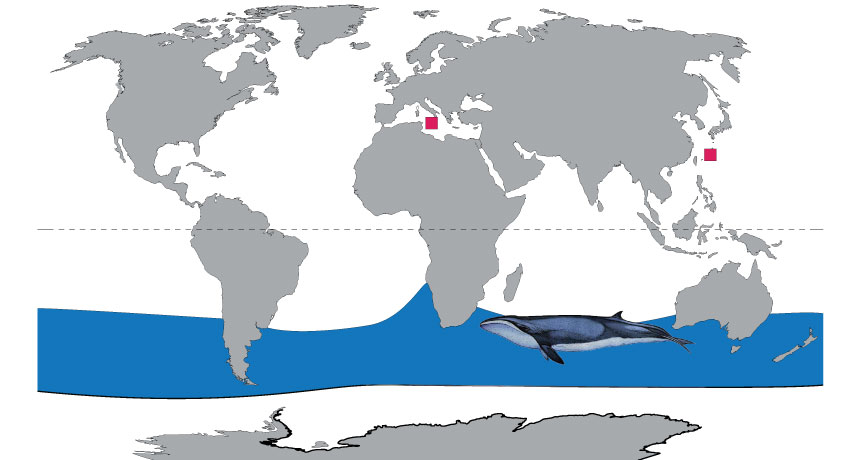Ancient whale turns up on wrong side of the world

A new discovery is turning the hemispheric history of a mysterious whale species upside-down. Two fossils recently unearthed in Italy and Japan suggest that a southern whale was briefly a denizen of northern waters more than half a million years ago.
Until now, all available evidence suggested that the pygmy right whale, Caperea marginata, and its ancestors have been steadfast Southern Hemisphere residents for the past 10 million years.
Pygmy right whales are so rarely sighted that scientists know very little about their lifestyle, and the fossil record is sparse, too. The new Northern Hemisphere fossils both closely resemble other confirmed specimens of the whales, researchers report October 9 in Current Biology. The fossils include a fragmented skull with ear bones dating to 0.5 to 0.9 million years ago, and a bone containing parts of the middle and inner ear that’s 1.7 million to 1.9 million years old.
Glaciation near the South Pole during the Pleistocene Ice Age may have temporarily pushed Caperea further north, the researchers propose. Then, as the glaciers melted, the whale migrated south again. Because the new fossils are separated in age by about a million years, it’s hard to say whether the whales crossed the equator multiple times or briefly established a longer-term population in the Northern Hemisphere.